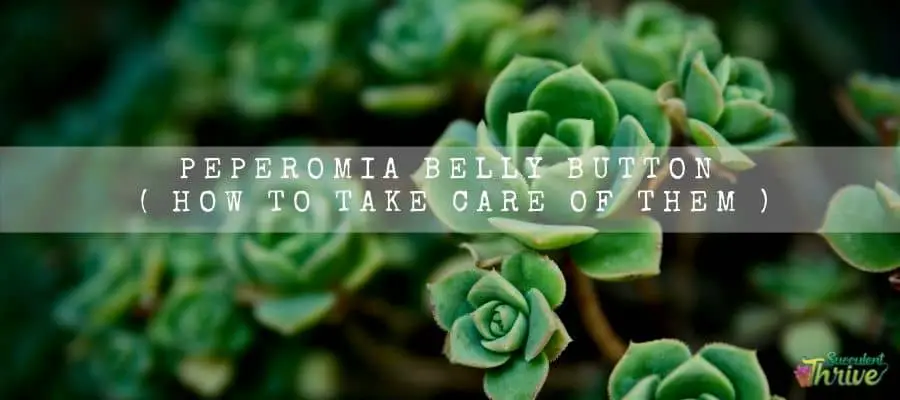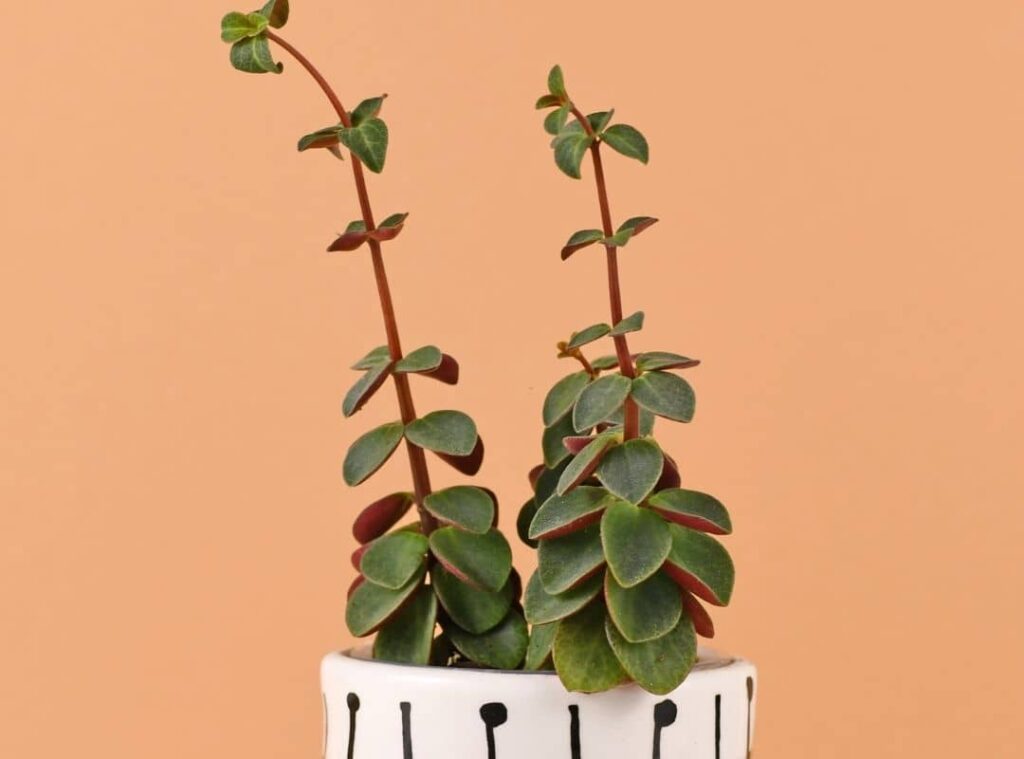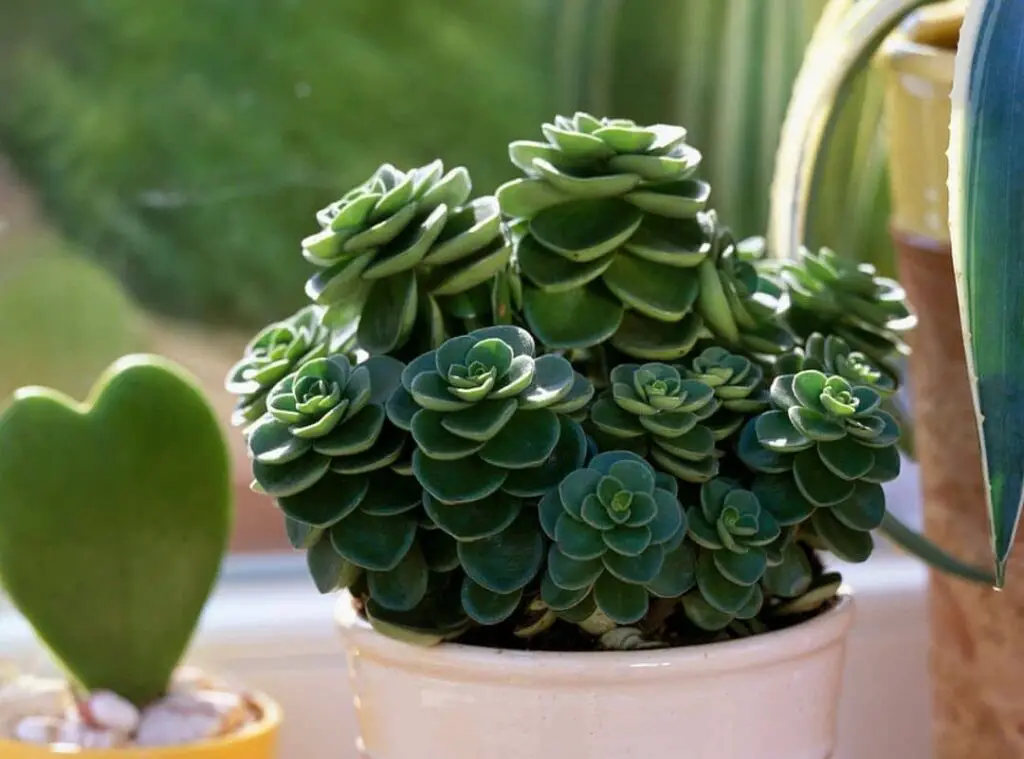Peperomia belly button or red log (Peperomia verticillata) button is an interesting plant which you could grow with minimum maintenance.
They have inherited the name red log, due to the red shading they have underneath their leaves. Peperomia generally are perennial plants and many people tend to grow them due to the ornamental leaves and unique foliage they have.
Peperomia belly button are evergreen plants which have succulent characteristics. They are rosette-forming plants and produce stems in an erecting manner.
One more added advantage of having them is their ability to produce some attractive showy flowers. However, many succulents’ enthusiasts are more interested in growing them for their foliage than their flowers.
If you live in tropical regions, you may use them as ground covers. These are endemic plants to Cuba, Haiti, Bolivia and to the Dominican republic.
If someone is looking to start growing Peperomia at first, Peperomia belly button plans would be the ideal choice to proceed with.
You could commonly spot them in terrariums as well. This is a comprehensive guide on how to look after these little beauties well and all of the common bugs you will come across when growing them. Further, this article is about the ways of multiplying these plants.

How do I identify the peperomia belly button?
To identify the Peperomia belly button plants, their double-colored foliage would be quite crucial. This feature makes them a perfect addition for the household collection.
The leaf’s top part would be dark green where else the underneath of the leaves would carry shades of red.
They are small plants and that characteristic makes them great picks as houseplants. Peperomia belly button leaves are dark green in color, and they grow closer to the plant’s stem.
Besides the aforesaid characteristics, you can use the Peperomia belly button blooms to identify them. Peperomia belly button flowers are bushy and spiked or they could be tailed.
However, the Peperomia belly button flowers are not that popular, and many people tend to grow them due to their foliage.
Size of the plant
Peperomia belly button would reach a maximum height of 2 foot ( 60 cm ) The vines are 8-12 inches in length.
Growth rate
Peperomia belly button grows steadily but at a slow rate.
One look care guide
| Botanical Name | Peperomia verticillata |
| Common Name | Peperomia belly button, Red log |
| Plant Type | Succulent |
| Mature Size | Maximum height of 2 foot ( 60 cm ) |
| Sun Exposure | Full Sunlight to partial shade |
| Soil Type | Well-draining |
| Soil pH | pH around 6.0 – 6.6 (Slightly acidic) |
| Flower Color | Showy |
| Hardiness Zones | USDA hardiness zone 10-12 |
| Native Area | Cuba, Haiti, Bolivia and the Dominican republic. |
| Toxicity | Nontoxic |
| Average price | $ 7 |
How do you take care of the peperomia belly button?
Light Requirement
When you grow them as houseplants, you could ideally place them closer to a windowsill but do not expose them to direct sunlight.
If it is difficult for you to arrange, you can place the plants closer to grow lights. Ideally bright sunlight would be beneficial for the optimal growth of the Peperomia belly button plants.
When you grow them outdoors, they can perform well if they can receive bright and filtered sunlight. Having said that, the extremely harsh sunlight would be unhealthy for the plants.
If you could spot your leaves are shriveled and have developed leggy growth, best is to expose them in a spot where they can gain moderate sunlight in a sunnier and shady spot.
If the Peperomia belly buttons are running short of sufficient sunlight, they would tend to stretch towards the best possible lighting source they can absorb.
Hence, to ensure that the whole plants receive sunlight evenly, you can keep rotating the plants on a constant basis so that it will assure that the entire plant receives sunlight evenly.
Temperature and humidity
Peperomia belly button are fond of growing in warmer temperature levels. Hence a temperature range of 65-80 degrees Fahrenheit would be quite effective.
Hence, they can survive at room temperature when you grow them as houseplants. Hence if there are drastic changes in temperatures, you need to assure that you are taking care of them well.
Consider keeping a temperature check instrument in the room and keep observing the temperature changes.
If there are much warmer temperatures in the room, you can be tactful in placing a fan. On the other hand, if there are cooler temperatures expected to come in, you can bring them indoors to protect the plants.
Never keep the Peperomia belly button plants closer to heat drafts and cold drafts as it could result in drastic temperature changes.
They prefer to have low humidity levels. Since they can store water in their succulent leaves, they can tolerate the low humidity levels.
If you wish, you can use a humidifier to control the humidity levels. To be precise a humidity level of 40 % would be ideal to grow these plants.

Is it cold hardy?
Peperomia belly buttons are not cold hardy plants.
USDA Hardiness Zone
Peperomia belly button grow hardy in USDA hardiness zones 10-12.
Watering Requirement
Watering the Peperomia belly button is critical when looking after them well.
You need to avoid over watering the Peperomia belly button as it would be quite harmful for them just like with the other succulents.
If you water them in abundance, it will result in rotting, waterlogged soil and even wilting too. To water them, I encourage you to use rainwater instead of tap water.
Resume watering the Peperomia belly button plants if you think their soil is withered.
If you are unsure whether it is dry or moist, you may simply place your finger in the soil and check. deally if the top layer of the soil is dry, you can proceed with watering them.
In terms of the watering frequency, you can do it as often as once every 10 days. Despite this, you need to always first check the soil status and then start watering them.
If you create waterlogged situations in the potting medium, it will create root rot and make the plants more susceptible to other bacterial and fungal infections.
Watering the plants properly and growing them in a well-draining soil mix go hand in hand. Besides, ensure that you have grown them in a pot which has draining holes too so that excess water can move through the pot.
Soil Requirement Type / pH
Well drained soil mix is critical when selecting the right soil mix for these plants. Hence you can use a soil mix which is blended with perlite.
Ideally a soil mix which is organic, fertile and a well-draining one would be perfect to grow them. You may use substances such as peat moss, perlite, or even coarse sand to fasten the draining of the soil mix.
The ordinary soil mix would not go well with these plants simply because they retain a plenty of water in the potting medium.
It is vital that you grow them in the right soil mix as it will have a greater impact on the plant’s survival. Ideal ph. should be 6.0-6.6 (Slightly acidic). To sum up, the right soil mix should be a loamy, well-draining one.
Pot size Potting and Repotting.
Peperomia belly button are small plants. Hence, they can grow in the same pot for a few years. They prefer to become a little root bound also.
This characteristic and the slow growth rate make them survive in the small pots for extended periods.
When you repot, you should always go ahead with a slightly larger pot and the ideal pot material should be terracotta or clay as these are porous materials.
Further they have a good aeration and it will reduce the adverse impacts for the plants if you mistakenly over water them. Besides, you can grow them in an orchid pot which has large openings also
Where to Plant
You can plant them in hanging baskets or in aforesaid containers. However, ensure that they get adequate sunlight levels though.
Fertilizer and time of year
The Peperomia belly button has moderate fertilizer requirements. Hence, if you overfeed them, it could be troublesome for the plants as it creates feed burns.
it would create less effects if you under feed them. A good quality water soluble fertilizer which has a ratio of 1:1:1 would be more appropriate.
You can feed them once every fortnight when they are in their actively growing phase in spring and in summer. Skip feeding them in dormancy as they will be resting during this period.

Dormancy
Peperomia belly button is a summer dormant plant, which means that they grow well in winter.
Can be toxic to pets
Peperomia belly buttons are nontoxic for pets and for humans as well. They will not be harmful even if you ingest them. Having said that, it is always best to leave them aside from the kids.
Common bugs and illnesses
Peperomia belly button plants are sensitive to overwatering and, if you do so, it will result in root rot.
Chances are that root rot may even cause the plants to die. Hence, ensure that you practice the aforesaid tips when watering them.
Besides, the exposure for inadequate sunlight will create leggy growths of the plants. Having said that, you should avoid exposing them to bright direct sunlight also.
Wilting could be one more issue which you have to encounter when you are growing the Peperomia belly button plants. It could take place due to low humidity levels, lack of water, excess water etc.
Apart from the above you may come across some pests such as fungus gnats, mealy bugs which could be so annoying for these plants.
Fungus gnats are small black flies and mealybugs could be spotted as small white substances on the plants.
Besides, Peperomia belly button may suffer from a disease called Pythium also. If the plant’s roots have become delicate and infected, it could be the result of this disease.
Consider using insecticidal spray or soap to remedy them.
Additionally, Peperomia belly button leaves turn yellow if they have a deficiency of nutrients. To remedy this, you need to feed them with a fertilizer which is rich in Nitrogen and in Potassium.
Overall, if you water them properly and expose them to sufficient sunlight levels, they will thrive well without any major concerns.
Besides, fertilize them properly and provide them with the right soil mix. As long as you follow these guidelines ,they will perform well.
Special Care tips
Despite how delicate these plants are, it is always best to do the necessary pruning to give them the best looks.
Ensure that you prune the plants to get rid of the dead parts of the plant and to control the size of it too. Then they will look attractive.
Further if you spot any infected plant parts, you need to remove them as it will not spread any further then.
Additionally , ensure that all the tools you are using are sterile and disinfected so that it would not create any infections in the plants
How to propagate the peperomia belly button.
Propagating the Peperomia belly button plants is very simple. The most effective way of propagating them is using the stem cuttings.
Additionally, you could use their leaf cuttings also to propagate them. You may do it either in soil or in water. No matter what growing medium you use, propagating the Peperomia belly button is very easy.
If you wish to use the leaf cuttings to propagate them, first you need to arrange the potting mix. Next cut a healthy-looking leaf of the plant.
When you cut the leaf, ensure that you are cutting one closer to the stem base.You may also use the whole leaf for propagation or cut it into two parts. You may sprinkle some rooting powder on the cut edges so that it would stimulate the root formation of them.
After that, make a small hole in the soil mix and place the cuttings in the hole. Next add some potting mix and make the cuttings stable.
You may water the specimen thoroughly and next cover it with a polythene bag. Expose them for bright indirect sunlight.
However, ensure that you take off the cover for a few hours so that it will avoid building the unnecessary humidity. They will first start growing the roots and then the shoot formation will take place.
You may use stem cuttings also to propagate the Peperomia belly button plants. However, the ideal season to do it would be spring.
To start off, you need to cut off a healthy stem from the Peperomia belly button plant which ideally has about 3-4 leaves also.
Dip them in a rooting hormone. Now make some holes in the potting medium and place the cuttings. Ensure that they are well established there. Water them to keep them moist.
If you wish to propagate the Peperomia belly button in water, you need to select a healthy-looking stem and take off all the leaves it has in its base.
After that you may place the stems in a cup of water. I recommend using rain water for this. Next leave them in a bright sunny spot but away from direct sunlight.
Once you can see the roots have formed from the cuttings, you can pot them in your own pot as you desire.
Conclusion
Peperomia belly button are a vibrant set of plants which will add so much beauty wherever you locate them.
Their easy maintenance and long durability are two more special characteristics of these plants. They are not toxic plants.
Hence if you are a pet lover, you may add the beauties into your indoor garden collection without any hesitation.
Anybody can grow the Peperomia belly button plants, be it a fresher in gardening or an experienced gardener. Happy cultivating with Peperomia belly button plants.
Read Next : Why Is Kalanchoe Blossfeldiana Leggy? (Only 1 Answer)
